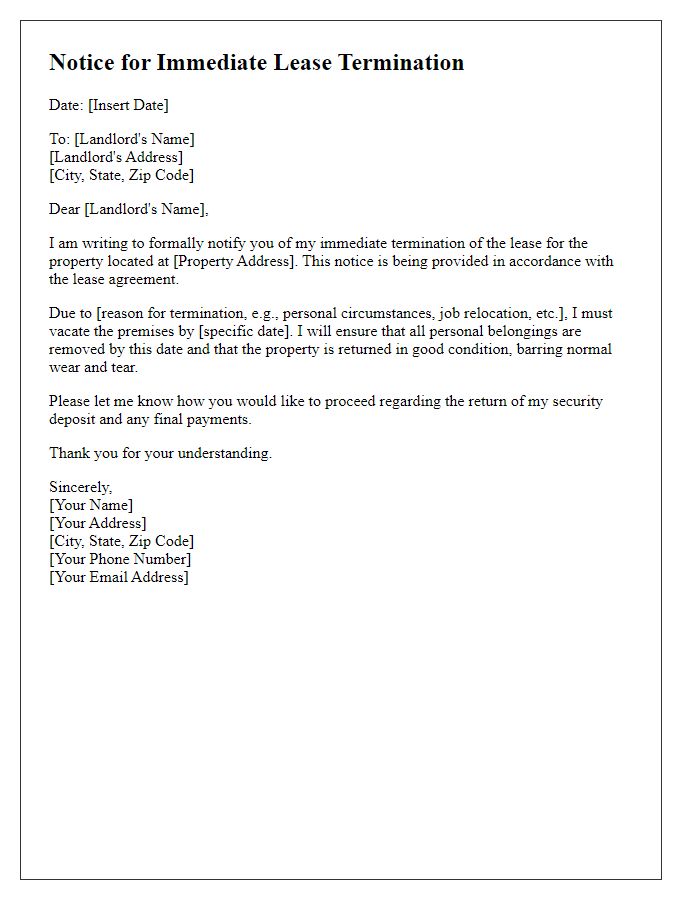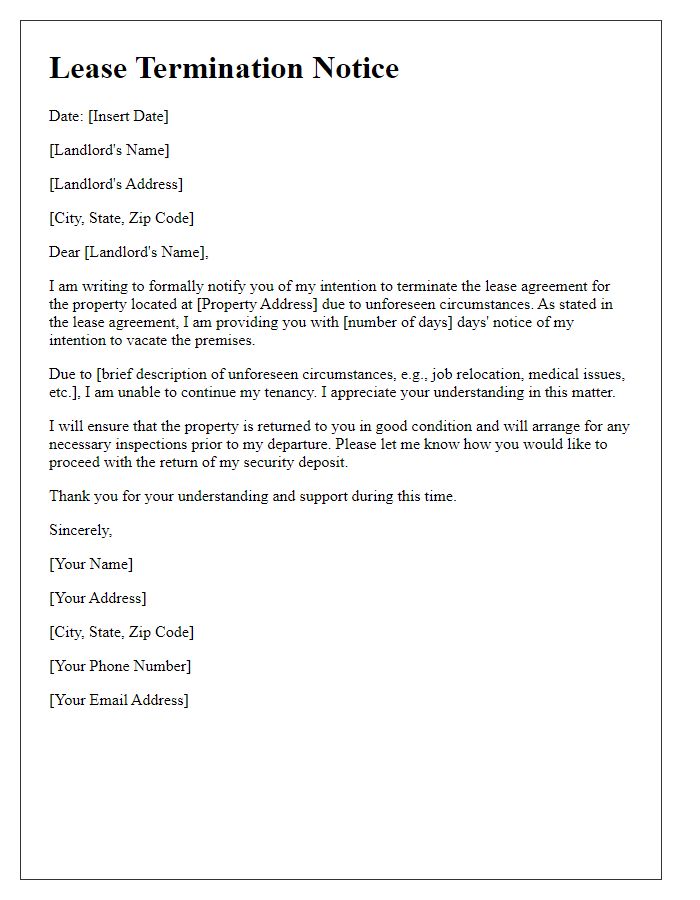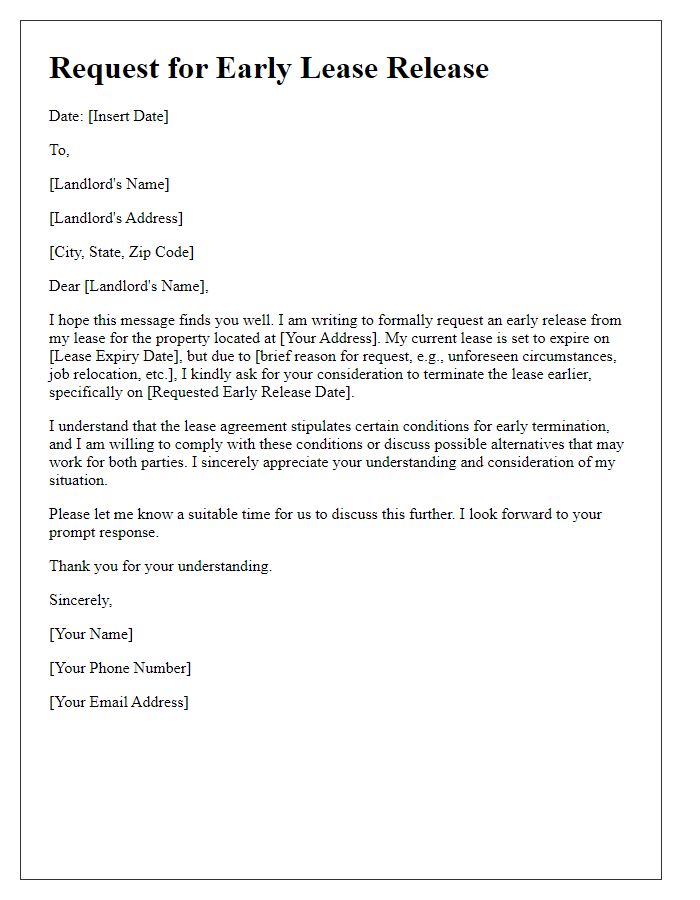Are you considering moving out before your lease term ends? Whether due to a new job, personal circumstances, or simply a desire for change, navigating the early termination of a lease can feel overwhelming. In this article, we'll guide you through the essential components of a lease early termination notice, ensuring you communicate effectively with your landlord. So, keep reading to discover tips and templates that can simplify the process for you!

Clear heading and date
Early termination of a lease agreement requires clear communication and adherence to legal obligations. Prepare a formal notice that includes specific elements. Start with the heading "Early Termination of Lease Notice," followed by the current date (e.g., October 18, 2023). Clearly state the property address, such as "123 Maple Street, Apartment 4B," and reference the lease start date for clarity. Specify the planned termination date, ensuring compliance with notice periods outlined in the lease agreement, often 30 or 60 days in advance. Include the reason for early termination, which may align with local laws or tenant rights. Mention any expectations regarding the return of the security deposit, stipulating a forwarding address for correspondence. Conclude with a polite expression of gratitude for the landlord's understanding, providing your contact information for any follow-up discussions.
Landlord's and tenant's contact information
Contact information for landlords often includes vital details such as full name, mailing address, phone number, and email address. For tenants, essential elements comprise their name, current address, contact number, and electronic mail for prompt communication. Specificity in these details aids legal correspondence and clarifies the parties involved in the lease agreement. Including the date of the correspondence is crucial for establishing timelines related to lease termination processes. This structured information ensures that all parties are clearly identified and can facilitate smooth communication during the lease termination process.
Specific lease agreement details
Early termination of a lease agreement requires careful consideration of specific terms and conditions outlined in the document. Notable lease details include the lease duration, typically ranging from one year to two years, and the notice period often required, commonly 30 to 60 days. Property details, such as the address--123 Main Street, Apartment 4B, Cityville--and the names of the parties involved (the landlord and tenant) must be clearly stated. Additionally, any applicable early termination fees, usually a percentage of the remaining rent or a fixed amount, should be referenced. For further context, the lease may also involve stipulations regarding the condition of the property upon move-out, including cleaning requirements and potential deductions from the security deposit.
Reason for early termination
The early termination of lease agreements can arise from various reasons. Personal circumstances, such as job relocation to cities like Chicago or Los Angeles, can necessitate a move before the lease ends. Financial constraints may prompt tenants to seek a smaller apartment in more affordable neighborhoods. Health issues may require individuals to seek closer proximity to medical facilities or family support in places like New York or Miami. Additionally, significant life changes such as marriage or divorce could also impact a tenant's living situation and lead to an early lease termination. In such scenarios, communication with landlords regarding lease terms is crucial to ensure a smooth transition.
Request for deposit return and final inspection
A lease early termination notice informs landlords about a tenant's intention to end a rental agreement before the stipulated lease period. This notice must include vital details such as the tenant's name, lease address (often a specific apartment in a multi-unit building), termination date (usually giving a minimum notice period of 30 days), and a request for a final inspection to assess the property's condition. Additionally, it should request the return of the security deposit, which is typically equivalent to one month's rent (varies by jurisdiction), mentioning any applicable state laws governing deposit returns. The notice serves not only to notify the landlord but also to protect the tenant's rights under the lease agreement, ensuring a smooth transition out of the rental property.













Comments